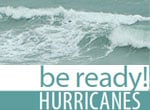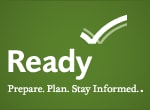Food and Water Needs: Preparing for a Disaster or Emergency

A disaster can easily disrupt the food supply at any time, so plan to have at least a 3-day supply of food on hand.
Keep foods that:
- Have a long storage life
- Require little or no cooking, water, or refrigeration, in case utilities are disrupted
- Meet the needs of babies or other family members who are on special diets
- Meet pets’ needs
- Are not very salty or spicy, as these foods increase the need for drinking water, which may be in short supply
Learn more about preparing an emergency food supplyexternal icon.
When storing food, it is not necessary to buy dehydrated or other types of emergency food.
- Check the expiration dates on canned foods and dry mixes. Home-canned food usually needs to be thrown out after a year.
- Use and replace food before its expiration date.
Certain storage conditions can enhance the shelf life of canned or dried foods. The ideal location is a cool, dry, dark place. The best temperature is 40° to 70°F.
- Store foods away from ranges or refrigerator exhausts. Heat causes many foods to spoil more quickly.
- Store food away from petroleum products, such as gasoline, oil, paints, and solvents. Some food products absorb their smell.
- Protect food from rodents and insects. Items stored in boxes or in paper cartons will keep longer if they are heavily wrapped or stored in waterproof, airtight containers.
Learn more about storing and using emergency food suppliesexternal icon.
Preparing food after a disaster or emergency may be difficult due to damage to your home and loss of electricity, gas, and water. Having the following items available will help you to prepare meals safely:
- Cooking utensils
- Knives, forks, and spoons
- Paper plates, cups, and towels
- A manual can- and bottle-opener
- Heavy-duty aluminum foil
- Propane gas or charcoal grill; camp stove
- Fuel for cooking, such as charcoal. (CAUTION: Only use charcoal grills or camp stoves outside of your home to avoid smoke inhalation and carbon monoxide poisoning.)
- Store at least 1 gallon of water per day for each person and each pet. Consider storing more water than this for hot climates, for pregnant women, and for people who are sick.
- Store at least a 3-day supply of water for each person and each pet. Try to store a 2-week supply if possible.
- Observe the expiration date for store-bought water; replace other stored water every 6 months.
- Store a bottle of unscented liquid household chlorine bleach to disinfect your water and to use for general cleaning and sanitizing. Try to store bleach in an area where the average temperature stays around 70°F (21°C). Because the amount of active chlorine in bleach decreases over time due to normal decay, consider replacing the bottle each year.
Note: Alcohol dehydrate the body, which increases the need for drinking water.
Unopened commercially bottled water is the safest and most reliable emergency water supply.
Use of food-grade water storage containers, such as those found at surplus or camping supply stores, is recommended if you prepare stored water yourself.
Before filling with safe water, use these steps to clean and sanitize storage containers:
- Wash the storage container with dishwashing soap and water and rinse completely with clean water.
- Sanitize the container by adding a solution made by mixing 1 teaspoon of unscented liquid household chlorine bleach in one quart of water.
- Cover the container and shake it well so that the sanitizing bleach solution touches all inside surfaces of the container.
- Wait at least 30 seconds and then pour the sanitizing solution out of the container.
- Let the empty sanitized container air-dry before use OR rinse the empty container with clean, safe water that already is available.
Avoid using the following containers to store safe water:
- Containers that cannot be sealed tightly
- Containers that can break, such as glass bottles
- Containers that have ever held toxic solid or liquid chemicals, such as bleach or pesticides
- Plastic or cardboard bottles, jugs, and containers used for milk or fruit juices
For proper water storage:
- Label container as “drinking water” and include storage date.
- Replace stored water that is not commercially bottled every six months.
- Keep stored water in a place with a fairly constant cool temperature.
- Do not store water containers in direct sunlight.
- Do not store water containers in areas where toxic substances such as gasoline or pesticides are present.
Learn how to make water safe in an emergency and how to find other water sources.


